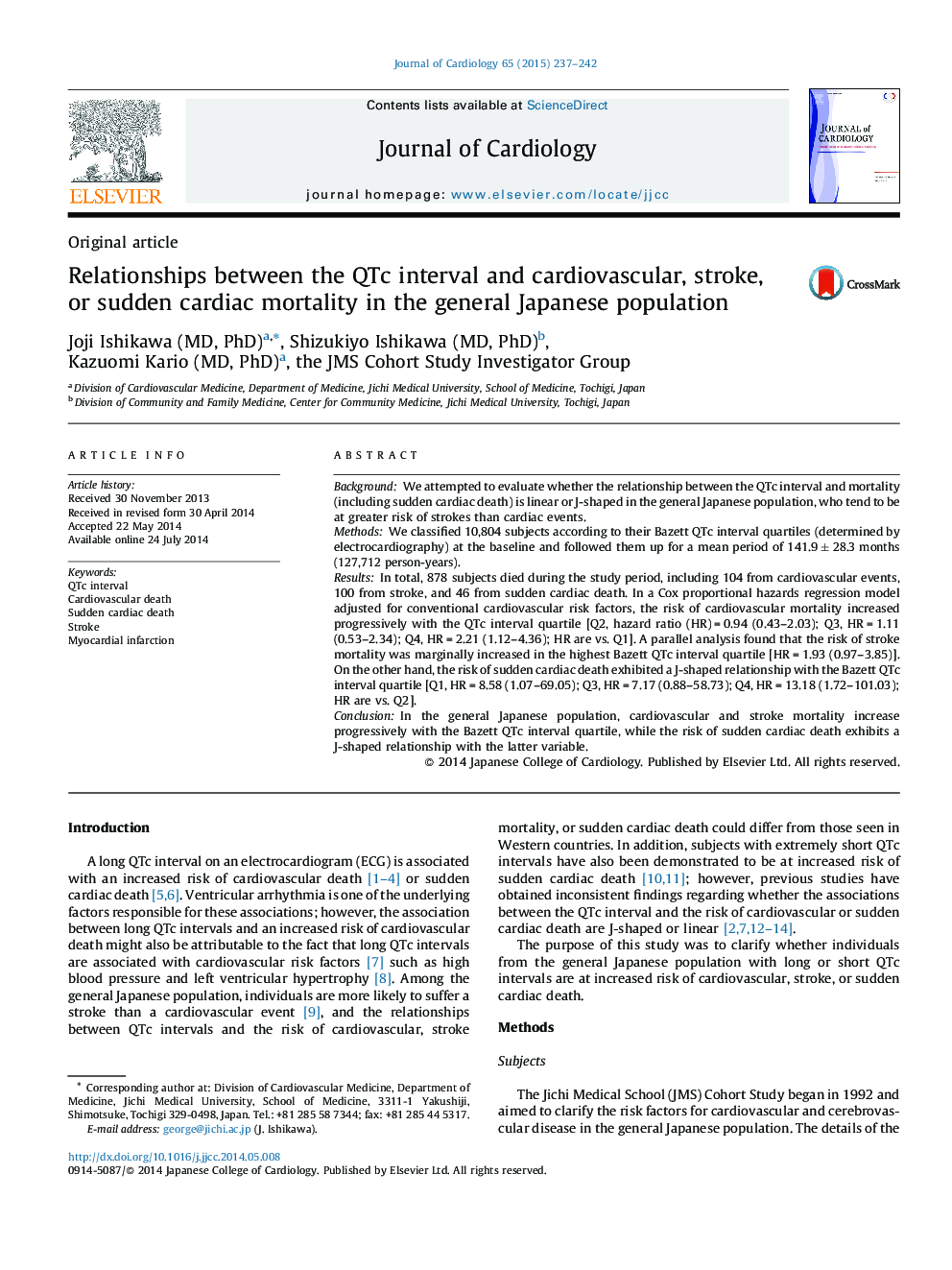| Article ID | Journal | Published Year | Pages | File Type |
|---|---|---|---|---|
| 5983965 | Journal of Cardiology | 2015 | 6 Pages |
BackgroundWe attempted to evaluate whether the relationship between the QTc interval and mortality (including sudden cardiac death) is linear or J-shaped in the general Japanese population, who tend to be at greater risk of strokes than cardiac events.MethodsWe classified 10,804 subjects according to their Bazett QTc interval quartiles (determined by electrocardiography) at the baseline and followed them up for a mean period of 141.9 ± 28.3 months (127,712 person-years).ResultsIn total, 878 subjects died during the study period, including 104 from cardiovascular events, 100 from stroke, and 46 from sudden cardiac death. In a Cox proportional hazards regression model adjusted for conventional cardiovascular risk factors, the risk of cardiovascular mortality increased progressively with the QTc interval quartile [Q2, hazard ratio (HR) = 0.94 (0.43-2.03); Q3, HR = 1.11 (0.53-2.34); Q4, HR = 2.21 (1.12-4.36); HR are vs. Q1]. A parallel analysis found that the risk of stroke mortality was marginally increased in the highest Bazett QTc interval quartile [HR = 1.93 (0.97-3.85)]. On the other hand, the risk of sudden cardiac death exhibited a J-shaped relationship with the Bazett QTc interval quartile [Q1, HR = 8.58 (1.07-69.05); Q3, HR = 7.17 (0.88-58.73); Q4, HR = 13.18 (1.72-101.03); HR are vs. Q2].ConclusionIn the general Japanese population, cardiovascular and stroke mortality increase progressively with the Bazett QTc interval quartile, while the risk of sudden cardiac death exhibits a J-shaped relationship with the latter variable.
